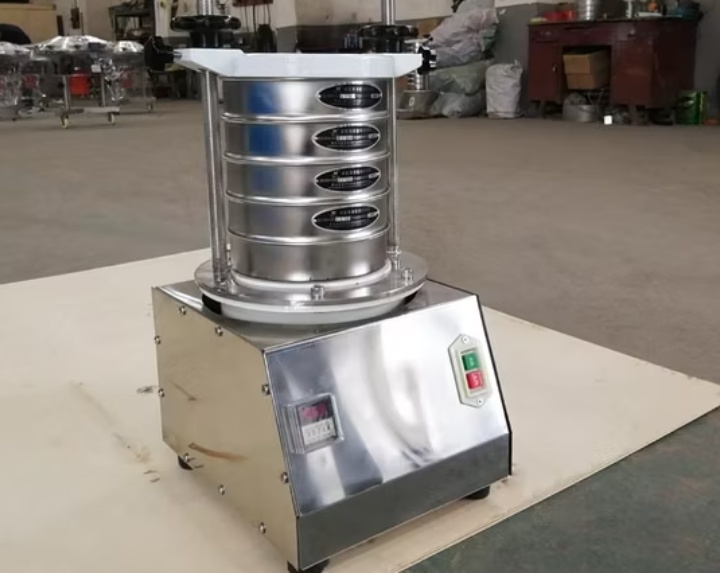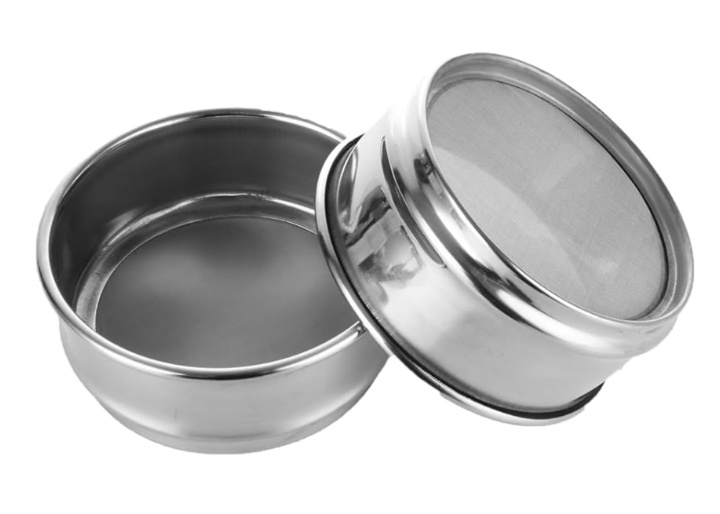Tuesday October-14 2025 17:32:19
Standard Test Sieve Sizes specification is the basis for ensuring the accuracy and comparability of screening results, Standard Test Sieve is a commonly used particle analysis tool in laboratories and industrial sites. The sieve hole Sizes covers a wide range from micron (20 µm) to millimeter (125 mm), aiming to meet the actual needs of various materials in different particle size analysis applications. As for the diameter of the sieve frame, 200 mm is a more common specification in the laboratory, and there are also sieve frames with other diameters to meet specific sample processing volume or equipment matching requirements.

The Standard Test Sieve Sizes range is wide. The larger the mesh number, the smaller the aperture of the sieve, and the finer the particles; conversely, the smaller the mesh number, the larger the aperture, and the coarser the particles. The screening range of Standard Test Sieve is usually divided into three categories according to the coarseness of the particle size: coarse, medium, and fine. The following is a detailed introduction to Standard Test Sieve Sizes:
Coarse particle size screening range
Coarse particle size screening is mainly used for materials with larger particles that are usually visible to the naked eye. The sieve sizes in this range are larger, and the corresponding mesh numbers are lower.
Sieve sizes: usually between 4.75 mm and 1 mm.
Corresponding mesh numbers: roughly between 4 and 18 meshes.
Typical applications: particle size analysis of aggregates such as sandstone and crushed stone. Preliminary screening of bulk materials such as ore and coal. Size classification of agricultural products such as grains and seeds.

Medium particle size screening range
Medium particle size screening is suitable for particles with sizes between coarse and fine particles, usually in the transition zone between powder and granules.
Sieve sizes: usually between 1 mm and 75 microns.
Corresponding mesh numbers: roughly between 18 and 200 meshes.
Typical applications: particle size control of various powdered and granular chemical raw materials. Particle size distribution determination of pharmaceutical powder. Fineness control of food raw materials such as flour, sugar, and condiments. Particle size analysis of metal powders, slag, etc.

Fine particle size screening range
Fine particle size screening is mainly used for very fine powders, which sometimes even require the help of a microscope to see clearly. The sieve sizes in this range are small, and the corresponding mesh number is very high.
Sieve hole sizes: usually between 75 microns (µm) and 20 microns (µm).
Corresponding mesh number: roughly between 200 mesh and 625 mesh or even higher (for example, some standards list 800 mesh, 1250 mesh or even 2500 mesh fine sieves).
Typical applications: particle size analysis of fine powders such as pigments, dyes, and catalysts. Particle size characterization of high-precision powders such as ceramic powders and nanomaterial precursors. Analysis of fine particles in soil and sediments.

The sieve frame diameter specifications of the Standard Test Sieve Sizes are mainly determined according to different standards. These standards ensure the uniformity of the sieve frame sizes, thereby ensuring the comparability of the screening results. The common and commonly used Standard Test Sieve sieve frame diameters range from 100mm to 400mm. Here is a detailed introduction:
200 mm or 8 inches: This is the most commonly used size in the laboratory. 8 inches is approximately equal to 203 mm, so these two sizes can usually be used interchangeably. This diameter sieve frame is suitable for most conventional particle analysis and can be used with a variety of vibrating sieving machines.
In addition to the most common 200 mm / 8 inch diameter, there are other sizes of sieve frames to meet specific application needs:
100 mm: Commonly used for screening of smaller sample amounts or in laboratory environments with limited space.
300 mm: Suitable for screening that needs to handle larger sample amounts, especially when analyzing coarse particles, it can reduce the risk of overloading the sieve and improve screening efficiency and accuracy.
305 mm or 12 inches: This is also a sieve frame for larger sample amounts, and 12 inches is approximately equal to 305 mm.
400 mm and 450 mm: These larger diameters are often used in industrial or special applications to process very large quantities of material.
| Standard | Altern. | Standard | Altern. | Standard | Altern. |
|---|---|---|---|---|---|
| 125.00 mm | 5.00 | 9.50 mm | 3/8 | 425 µm | No. 40 |
| 106.00 mm | 4.24 | 8.00 mm | 5/16 | 355 µm | No. 45 |
| 100.00 mm | 4 | 6.70 mm | 0.265 | 300 µm | No. 50 |
| 90.00 mm | 3 ½ | 6.30 mm | ¼ | 250 µm | No. 60 |
| 75.00 mm | 3 | 5.60 mm | No. 3 ½ | 212 µm | No. 70 |
| 63.00 mm | 2 ½ | 4.75 mm | No. 4 | 180 µm | No. 80 |
| 53.00 mm | 2.12 | 4.00 mm | No. 5 | 150 µm | No. 100 |
| 50.00 mm | 2 | 3.35 mm | No. 6 | 125 µm | No. 120 |
| 45.00 mm | 1 ¾ | 2.80 mm | No. 7 | 106 µm | No. 140 |
| 37.50 mm | 1 ½ | 2.36 mm | No. 8 | 90 µm | No. 170 |
| 31.50 mm | 1 ¼ | 2.00 mm | No. 10 | 75 µm | No. 200 |
| 26.50 mm | 1.06 | 1.70 mm | No. 12 | 63 µm | No. 230 |
| 25.00 mm | 1 | 1.40 mm | No. 14 | 53 µm | No. 270 |
| 22.40 mm | 7/8 | 1.18 mm | No. 16 | 45 µm | No. 325 |
| 19.00 mm | ¾ | 1.00 mm | No. 18 | 38 µm | No. 400 |
| 16.00 mm | 5/8 | 850 µm | No. 20 | 32 µm | No. 450 |
| 13.20 mm | 0.530 | 710 µm | No. 25 | 25 µm | No. 500 |
| 12.50 mm | ½ | 600 µm | No. 30 | 20 µm | No. 635 |
| 11.20 mm | 7/16 | 500 µm | No. 35 |
In summary, the sieve hole sizes and sieve frame diameter of Standard Test Sieve are the core specification parameters of Standard Test Sieve Sizes. The mesh sizes range from 20 microns to 125 mm, providing the basis for the precise separation of various types of particles. The frame diameter is more common at 200 mm, while other diameter sizes also meet the different requirements of specific application scenarios. In actual operation, accurately understanding and selecting test sieves that meet the corresponding standards is the prerequisite for ensuring the reliability of particle size analysis results. The uniformity of these size specifications makes the screening data between different laboratories or batches comparable.
Dahan Machinery provides soil sieves of various specifications and models to meet the screening needs of different particle sizes and...
Laboratory Sieve Shaker Machine Price
Laboratory sieve shaker machine is a device used for laboratory sieving and particle analysis...
Soil sieve price vary widely, ranging from $3 to $500. Small, handheld garden sieves are generally cheaper due to...
ASTM standard soil analysis sieves with pan and cover
ASTM standard soil analysis sieve is a special test sieve manufactured according to the American Society for Testing and Materials (ASTM) E11 standard...
material test sieve with sample
material test sieve with sample analyzes samples such as sand, quartz, fertilizer, and seeds to analyze particle size...
Oct 14, 2025
Standard Test Sieve is a commonly used particle analysis tool in laboratories and industrial sites. I...
Oct 10, 2025
material test sieve with sample
Material test sieve with sample By testing samples such as quartz, fertilizers, seeds, etc., the part...
Sep 20, 2025
Standard Test Method for Particle-Size Analysis of Soils
Standard Test Method for Particle-Size Analysis of Soils is used to determine the weight proportions ...
Sep 19, 2025
Stainless steel soil sieve is called soil sieving instrument or soil analysis sieve, and the mesh siz...
![]()
Then we look forward to hearing from you
Contact Us
Industrials
Yanjin county forest park gate to the west 1000 meters north road sitemap
